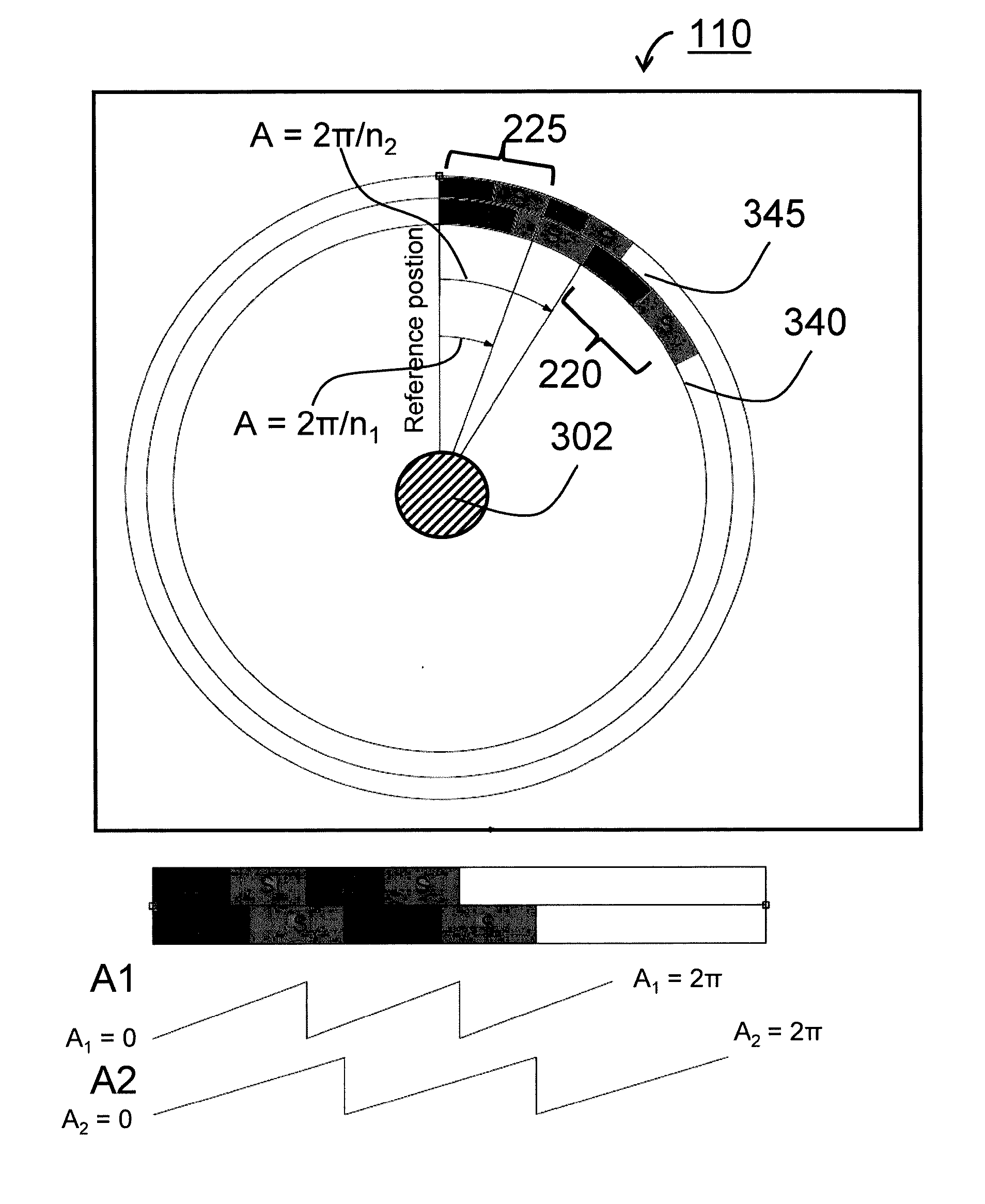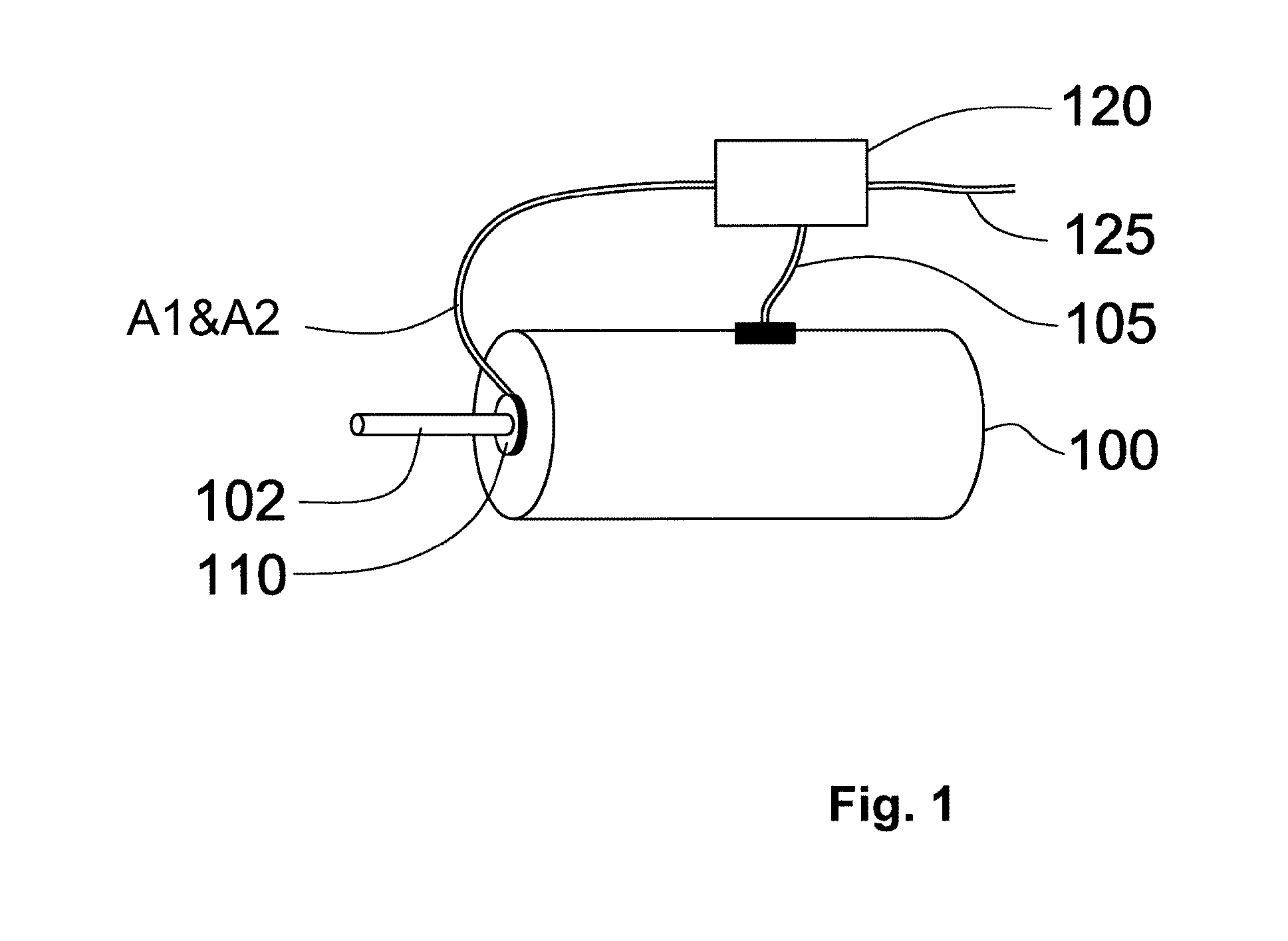Angle sensor, a bearing unit, electrical motor, a control system and error-check system
a control system and angle sensor technology, applied in the field of angle sensors, can solve problems such as difficult use of angle sensors, and achieve the effects of simple linear relationship, increased error in the determination of electrical angle signals, and high accuracy
- Summary
- Abstract
- Description
- Claims
- Application Information
AI Technical Summary
Benefits of technology
Problems solved by technology
Method used
Image
Examples
example
[0085]Assume n1=143 and n2=119. The Bezout numbers are then 5 and −6. (143×5+119×(−6)=1)
[0086]After measuring the first signal A1 (angle of the outer ring), and the second signal A2 (angle of the inner ring), the absolute angle signal AA of the shaft is simply given as 5A1−6A2.
[0087]The second embodiment of this invention is about making the absolute angle signal AA more accurate and preserving the accuracy of the electrical angle signal EA. In a design example, n1=144 and n2=120. Electrical angle signal EA, which is required to have a frequency 24 times the mechanical frequency is immediately obtained by subtracting A2 from A1.
EA=A1−A2
[0088]What is noteworthy about this design is that exactly 6 revolutions of A1 fit in each revolution of the electrical angle signal EA (144 / 24=6). This allows for a refinement procedure which increases the accuracy of EA by a factor of 6√{square root over (2)}. Details of this refinement procedure can be found with respect to FIGS. 6a to 6c. To expl...
PUM
 Login to View More
Login to View More Abstract
Description
Claims
Application Information
 Login to View More
Login to View More - R&D
- Intellectual Property
- Life Sciences
- Materials
- Tech Scout
- Unparalleled Data Quality
- Higher Quality Content
- 60% Fewer Hallucinations
Browse by: Latest US Patents, China's latest patents, Technical Efficacy Thesaurus, Application Domain, Technology Topic, Popular Technical Reports.
© 2025 PatSnap. All rights reserved.Legal|Privacy policy|Modern Slavery Act Transparency Statement|Sitemap|About US| Contact US: help@patsnap.com



